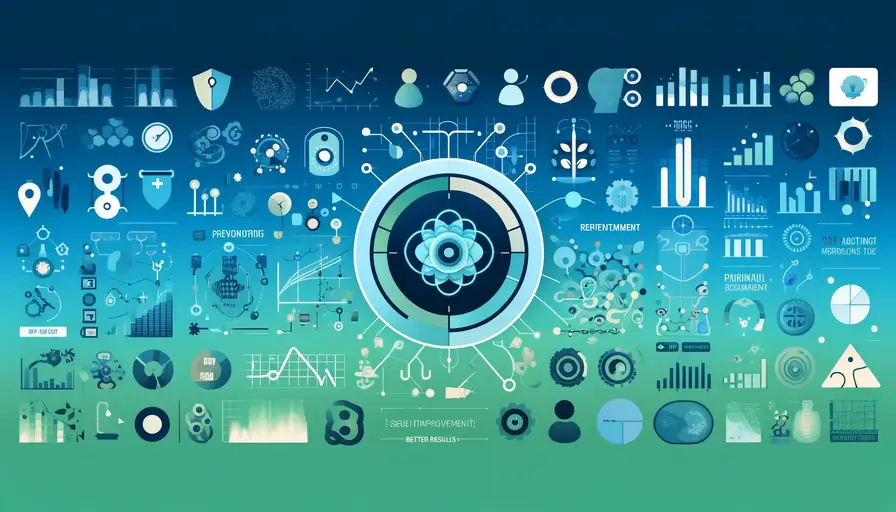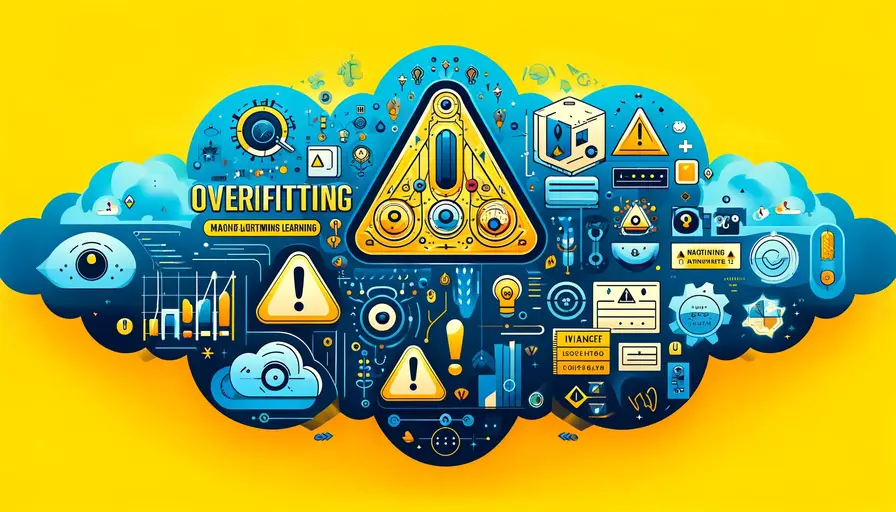
Biases on Accuracy in Machine Learning Models

Biases in machine learning models can significantly affect their accuracy and fairness. Addressing these biases requires a comprehensive approach, starting with diverse training data and extending to regular evaluation and mitigation strategies. This ensures that the models perform well and provide equitable results across different demographics and scenarios.
- Diverse and Representative Training Data
- Identifying Biases in the Data
- Addressing Biases Through Data Preprocessing
- Regular Model Retraining and Evaluation
- Fairness Metrics to Evaluate and Mitigate Biases in Machine Learning Models
- Implement Pre-processing Techniques Such as Data Augmentation to Reduce Bias in Training Data
- Understanding Calibration
- Identifying Biases
- Rectifying Biases
- Importance of Bias-Free Models
Diverse and Representative Training Data
Diverse and representative training data is crucial for developing unbiased machine learning models. Training data should reflect the variety of real-world scenarios that the model will encounter. This includes different demographics, environments, and contexts to ensure the model generalizes well across various situations.
Collecting diverse data involves sourcing information from multiple channels and ensuring that underrepresented groups are included. This diversity helps the model learn from a wide range of examples, reducing the likelihood of biased outcomes. Representative data ensures that the model's predictions are accurate and fair for all users.
Identifying Biases in the Data
Identifying biases in the data is the first step toward addressing them. Biases can stem from historical data that reflects societal prejudices or from imbalanced datasets where certain groups are underrepresented. Techniques such as exploratory data analysis (EDA) and statistical tests can help detect these biases.
 Regularization in Machine Learning
Regularization in Machine LearningExploratory data analysis involves visualizing and summarizing the data to uncover patterns that may indicate bias. For instance, analyzing the distribution of data points across different demographic groups can highlight imbalances. Statistical tests, such as the Chi-square test, can further confirm the presence of biases.
import pandas as pd
import seaborn as sns
import matplotlib.pyplot as plt
from scipy.stats import chi2_contingency
# Example dataset
data = pd.DataFrame({
'gender': ['male', 'female', 'male', 'female', 'male', 'female', 'female'],
'income': [50, 60, 45, 70, 55, 65, 62]
})
# Visualize data distribution
sns.countplot(data['gender'])
plt.show()
# Perform Chi-square test for independence
contingency_table = pd.crosstab(data['gender'], data['income'] > 50)
chi2, p, _, _ = chi2_contingency(contingency_table)
print(f'Chi-square statistic: {chi2}, p-value: {p}')Addressing Biases Through Data Preprocessing
Addressing biases through data preprocessing involves techniques like re-sampling, re-weighting, and transforming data to ensure fairness. Re-sampling can balance datasets by over-sampling underrepresented groups or under-sampling overrepresented ones. Re-weighting assigns different weights to instances based on their representation.
Transforming data can involve removing or anonymizing sensitive attributes to prevent the model from making biased decisions based on them. These preprocessing steps help create a more balanced dataset, improving the model's fairness and accuracy.
from sklearn.utils import resample
# Example dataset
data_majority = data[data.gender == 'male']
data_minority = data[data.gender == 'female']
# Upsample minority class
data_minority_upsampled = resample(data_minority,
replace=True,
n_samples=len(data_majority),
random_state=123)
# Combine majority class with upsampled minority class
data_balanced = pd.concat([data_majority, data_minority_upsampled])
# Display new class counts
print(data_balanced.gender.value_counts())Regular Model Retraining and Evaluation
Regular model retraining and evaluation are essential for maintaining fairness and accuracy over time. As new data becomes available, models should be retrained to incorporate these updates. Continuous evaluation helps identify and address any emerging biases.
 Overfitting in LSTM-based Deep Learning Models
Overfitting in LSTM-based Deep Learning ModelsRegular evaluation involves monitoring performance metrics across different demographic groups to ensure consistent accuracy and fairness. This process includes updating the model with new data and validating its performance against established fairness criteria.
Fairness Metrics to Evaluate and Mitigate Biases in Machine Learning Models
Fairness metrics are crucial for evaluating and mitigating biases in machine learning models. These metrics help assess how well the model performs across different groups and identify areas where improvements are needed.
Evaluating Biases
Evaluating biases involves using metrics such as demographic parity, equalized odds, and disparate impact. Demographic parity ensures that the model's predictions are independent of sensitive attributes, while equalized odds measure the difference in error rates across groups.
Disparate impact assesses the ratio of favorable outcomes between different groups, highlighting any significant disparities. These metrics provide a comprehensive view of the model's fairness and guide efforts to mitigate biases.
 Low Bias in Machine Learning Models and Overfitting
Low Bias in Machine Learning Models and Overfittingfrom sklearn.metrics import confusion_matrix, accuracy_score
# Example predictions and true labels
y_true = [1, 0, 1, 0, 1, 0, 0]
y_pred = [1, 0, 1, 1, 1, 0, 0]
# Confusion matrix
conf_matrix = confusion_matrix(y_true, y_pred)
print(f'Confusion Matrix:\n{conf_matrix}')
# Calculate accuracy for different groups
accuracy = accuracy_score(y_true, y_pred)
print(f'Overall Accuracy: {accuracy}')
# Example of calculating disparate impact
group1 = [1, 0, 1] # Group 1 true labels
group2 = [0, 1, 0] # Group 2 true labels
preds_group1 = [1, 0, 1] # Group 1 predictions
preds_group2 = [0, 1, 0] # Group 2 predictions
# Calculate favorable outcomes ratio
ratio_group1 = sum(preds_group1) / len(preds_group1)
ratio_group2 = sum(preds_group2) / len(preds_group2)
disparate_impact = ratio_group1 / ratio_group2
print(f'Disparate Impact: {disparate_impact}')Mitigating Biases
Mitigating biases involves techniques such as adversarial debiasing, re-weighting, and fairness constraints. Adversarial debiasing trains models to be fair by incorporating adversarial networks that penalize biased predictions. Re-weighting adjusts the importance of different samples based on their representation.
Fairness constraints impose conditions on the model to ensure fair treatment across different groups. These techniques help reduce biases and promote equitable outcomes in machine learning models.
# Example of using fairness constraints with Fairlearn
from fairlearn.reductions import ExponentiatedGradient, DemographicParity
# Load dataset and model
X_train, y_train = ...
model = ...
# Define fairness constraint
constraint = DemographicParity()
# Apply fairness constraint during training
mitigator = ExponentiatedGradient(model, constraints=constraint)
mitigator.fit(X_train, y_train)
# Evaluate fairness
mitigated_model = mitigator.predict(X_test)Implement Pre-processing Techniques Such as Data Augmentation to Reduce Bias in Training Data
Implementing pre-processing techniques like data augmentation helps in reducing biases by creating a more diverse training dataset. Data augmentation involves generating new data points by applying transformations to existing data, thereby enhancing its variability and representativeness.
Image Augmentation
Image augmentation techniques include rotation, flipping, cropping, and color adjustments. These transformations increase the dataset size and diversity, helping the model generalize better to new images and reducing biases associated with limited training data.
 Overfitting in Machine Learning Models
Overfitting in Machine Learning Modelsfrom tensorflow.keras.preprocessing.image import ImageDataGenerator
# Image data generator with augmentation
datagen = ImageDataGenerator(
rotation_range=20,
width_shift_range=0.2,
height_shift_range=0.2,
shear_range=0.2,
zoom_range=0.2,
horizontal_flip=True,
fill_mode='nearest'
)
# Example of augmenting images
for batch in datagen.flow_from_directory('data/train', batch_size=32):
# Process the batch
passText Augmentation
Text augmentation techniques include synonym replacement, random insertion, and back-translation. These methods create variations in the text data, improving the model's ability to handle diverse linguistic expressions and reducing biases related to specific wording or phrasing.
import nlpaug.augmenter.word as naw
# Text data
text = "Machine learning models can be biased."
# Synonym replacement
aug = naw.SynonymAug(aug_src='wordnet')
augmented_text = aug.augment(text)
print(augmented_text)Data Balancing
Data balancing ensures that the training dataset has an equal representation of different classes or groups. Techniques like oversampling minority classes and undersampling majority classes help create a balanced dataset, reducing biases and improving model fairness.
from imblearn.over_sampling import SMOTE
# Example dataset
X, y = ...
# Apply SMOTE for balancing the dataset
smote = SMOTE()
X_resampled, y_resampled = smote.fit_resample(X, y)
print(f'Original dataset shape: {Counter(y)}')
print(f'Resampled dataset shape: {Counter(y_resampled)}')Understanding Calibration
Calibration refers to the process of adjusting the model's probability estimates to reflect true likelihoods. Proper calibration ensures that the predicted probabilities are reliable and accurate, which is crucial for decision-making processes.
Types of Calibration Techniques
Types of calibration techniques include Platt scaling and isotonic regression. Platt scaling uses a logistic regression model to adjust the outputs, while isotonic regression fits a non-decreasing function to the predicted probabilities. Both methods help improve the reliability of probability estimates.
 Variability in Machine Learning Results
Variability in Machine Learning Resultsfrom sklearn.calibration import CalibratedClassifierCV
from sklearn.linear_model import LogisticRegression
# Example
dataset and model
X_train, y_train = ...
model = LogisticRegression()
# Fit the model
model.fit(X_train, y_train)
# Calibrate the model using Platt scaling
calibrated_model = CalibratedClassifierCV(model, method='sigmoid')
calibrated_model.fit(X_train, y_train)Identifying Biases
Identifying biases involves continuously monitoring the model's performance and analyzing its predictions across different demographic groups. This helps in detecting any systematic errors or disparities that may indicate bias.
Tools like Fairlearn and AI Fairness 360 can assist in identifying biases by providing metrics and visualizations that highlight disparities in model performance. These tools help in assessing the fairness of machine learning models and identifying areas that need improvement.
Rectifying Biases
Rectifying biases requires a combination of techniques, including re-training the model with balanced data, applying fairness constraints, and continuously monitoring performance. This iterative process ensures that biases are addressed and the model remains fair and accurate over time.
Continuous improvement involves regularly updating the training data, re-evaluating the model's performance, and implementing new techniques to mitigate biases. This proactive approach helps in maintaining the fairness and reliability of machine learning models.
 The Impact of Bias on Fairness in Machine Learning Algorithms
The Impact of Bias on Fairness in Machine Learning AlgorithmsImportance of Bias-Free Models
Bias-free models are crucial for ensuring fair and equitable outcomes in machine learning applications. Unbiased models provide accurate and reliable predictions for all users, regardless of their demographic characteristics.
Ethical considerations also underscore the importance of bias-free models. Ensuring fairness in machine learning helps build trust in AI systems, promotes inclusivity, and prevents the reinforcement of existing societal biases. By prioritizing bias-free models, organizations can deliver more just and effective solutions.
Addressing biases in machine learning models is essential for ensuring their accuracy and fairness. By using diverse training data, identifying and mitigating biases, employing pre-processing techniques, and understanding calibration, practitioners can develop robust and equitable models. Continuous monitoring and regular updates further ensure that models remain unbiased and perform reliably across various scenarios.
If you want to read more articles similar to Biases on Accuracy in Machine Learning Models, you can visit the Bias and Overfitting category.






You Must Read